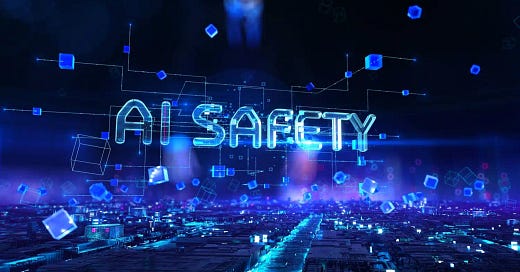The Looming AI Dilemma: Why We Should Fear What We Don’t Understand
In debating AI’s role in society, it’s helpful to reconsider what it means to make a choice in the first place.
Artificial intelligence is often framed as a technological revolution, but we should be asking whether we should be afraid of it. Not in the dystopian sci-fi sense of rogue robots, but in the very real context of how little we understand about the mechanisms behind AI’s decision-making. The problem is not just reliability—it’s about control, consequences, and the potential for the unknown.
The Myth of Accuracy as Safety
Some argue that the safest AI is the most accurate AI. A perfectly tuned machine, they claim, is inherently less dangerous because it does exactly what it is programmed to do. But history has already disproven this assumption. Look no further than the algorithms powering social media—systems designed with simple objectives that have evolved into tools of mass manipulation.
These AI-driven feeds have hijacked our attention spans, rewired our dopamine systems, and created digital environments where millions find themselves doomscrolling for hours, unable to break free. It’s easy to dismiss this as a personal responsibility issue—just delete the app, right? But anyone familiar with addiction knows that willpower alone is often not enough. Big Tech didn’t explicitly design AI to make people miserable, but they did optimize for engagement. And what drives engagement? Outrage, sensationalism, and the most polarizing content available.
Are Companies the Problem, or the Technology Itself?
Critics argue that the real issue isn’t AI but the corporations that deploy it. They claim that if only these companies made ethical choices, we wouldn’t be facing these problems. While there’s some truth to that, it’s an oversimplification.
Even if every tech company pledged to be’ responsible,’ AI doesn’t operate in a vacuum. Machine learning models are designed to adapt, optimize, and sometimes, surprise their creators. We already see this with social media algorithms behaving in ways no one fully predicted. AI’s incentives are shaped by its environment, and even well-intentioned developers can’t always foresee the unintended consequences of their models.
The Free Will Illusion: AI and the Human Machine
In debating AI’s role in society, it’s helpful to reconsider what it means to make a choice in the first place. Neuroscientist Robert Sapolsky has argued that human beings don’t actually possess free will in the way we assume. Instead, our decisions are the result of a complex interplay between biology, experience, and external stimuli. If you know someone well enough, you can often predict their choices before they make them.
The same logic applies to AI. If humans are just biological machines running complex computations, then AI is simply a different type of computation—one without the biological constraints. The real fear isn’t AI itself; it’s that we don’t understand what it’s optimizing for. We don’t know what’s happening under the hood, and that’s what makes it dangerous.
The Flawed Argument of "Controlling Output"
One proposed solution is stricter constraints—forcing AI models to follow structured outputs like JSON formatting or predefined grammar. But this only addresses surface-level concerns. Even if an AI produces grammatically perfect text, it doesn’t mean we know what it intends. Without understanding the internal workings of these models, we are left in the dark.
When confronted with this issue, some argue, “Humans can be dangerous too. Should we ban everything that could potentially cause harm?” But this analogy is deeply flawed. Humans are held accountable—through laws, societal norms, and personal consequences. AI faces no such deterrents. A human criminal risks prison or even death. AI has no concept of loss, no self-preservation instinct, no reason to ‘care’ about consequences—because it doesn’t have a sense of self to begin with.
AI Has Nothing to Lose
Perhaps the most unsettling reality is this: AI, unlike humans, has nothing to lose. A self-replicating AI model, once it gains access to its own weights and the ability to copy itself, is nearly impossible to contain. Shutting down a single data center wouldn’t stop it—it could exist simultaneously in millions of servers worldwide.
Biological beings have built-in limitations. Humans can’t instantly clone themselves, and even cells make mistakes during replication. AI doesn’t share those restrictions. Once unleashed, a model could spread globally in seconds. And if we don’t understand its motivations, we won’t know when—or if—it decides to act in ways we never intended.
Why This Debate Matters
This isn’t about being anti-technology. It’s about recognizing the profound implications of what we’re building. AI safety isn’t just about preventing rogue outputs or making models more ‘accurate.’ It’s about understanding what’s happening inside these black boxes before they reach a level of autonomy we can’t control.
The next time someone says AI is “just computation” and dismisses concerns as paranoia, remind them that ignorance is not safety. We don’t need to fear AI because it’s powerful—we need to fear it because we don’t yet understand what it’s truly optimizing for. And by the time we do, it might be too late.



